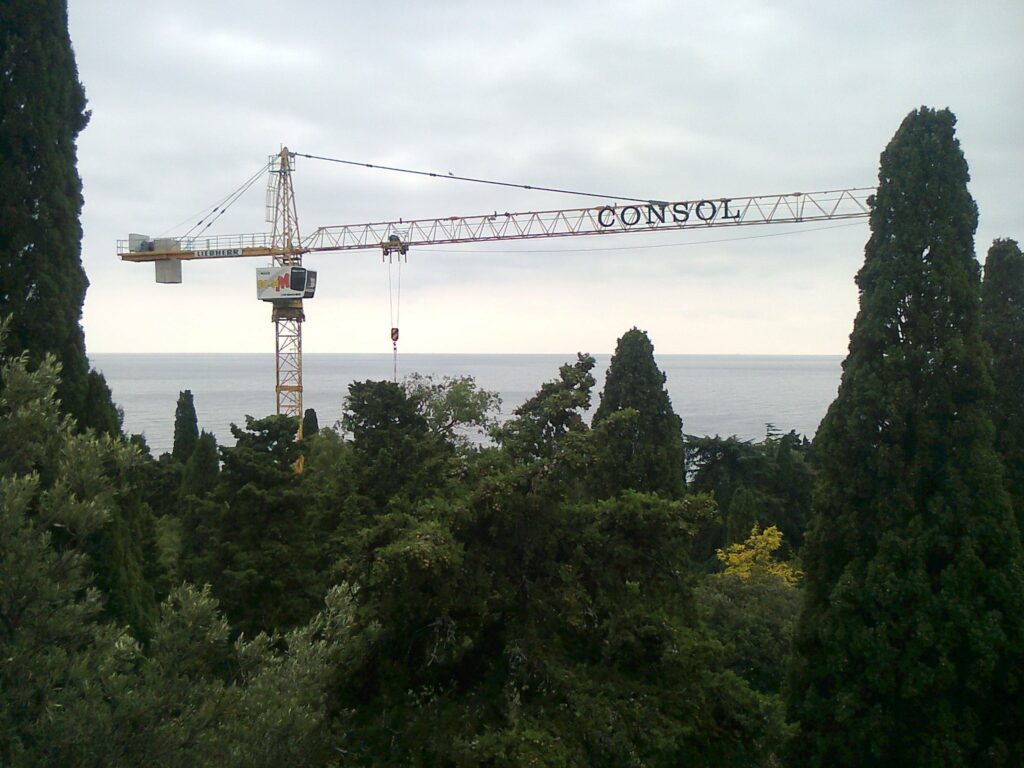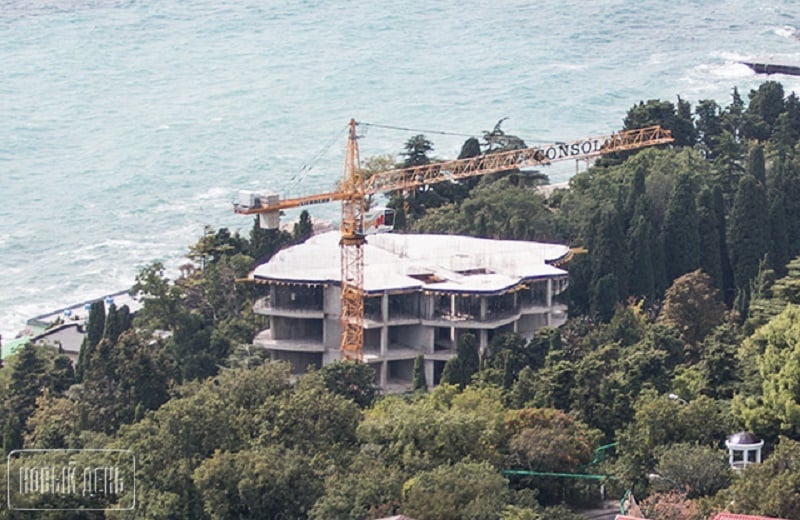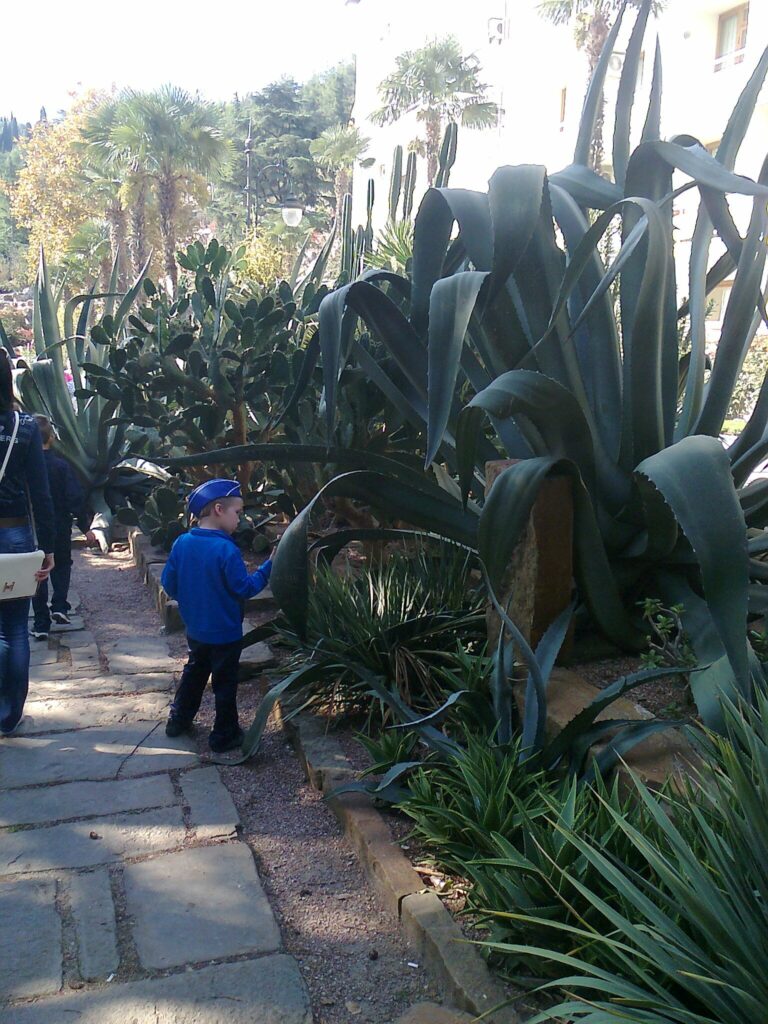Destruction and aggression are key definitions of Russian occupation in respect of the Crimea’s nature. The Yalta and Crimean Nature Reserves are being destroyed as scientific institutions, and the Opuk Reserve and the Karalar Regional Landscape Park have been turned into military training grounds. The parks of the Southern Coast of Crimea, which are of global importance, are being encumbered with skyscrapers, cottages and luxury hotels.
DELETED FROM THE REGISTER
Cape Martian Nature Reserve is located next to the Nikita Botanical Garden. At one time, some Ukrainian officials used it as a dacha. Conservationists tried to restore order there, give the Reserve the status of a specific legal entity and expand its territory. The struggle was in full swing when the occupation of Crimea took place. Newcomers not only did not solve the outdated problems of “Cape Martian”, but significantly worsened the situation.
On August 4, 2015, pursuant the order of the so-called Council of Ministers of Crimea, the Reserve was transformed into a “natural park of regional significance” (it corresponds to our regional landscape park). That is, the occupiers lowered “Cape Martian” status at least two grades in the rating of the severity of the protection regime and protected status. What is happening there now is unknown.
However, “Cape Martian” was lucky. Two protected areas were eliminated altogether by special resolutions of the Council of Ministers of Crimea. By the order of the occupation government of December 12, 2018, №1571-p.100 the “Southern Coast Oak-groves” Reserve (10.8 ha) and park-monument of garden art “Small Livadia Park” (9.6 ha) are removed from the list of specially protected territories of the Crimea. But that’s not all.
“In Crimea, all categories of nature reserve fund of Ukraine are represented, except for biosphere reserves. Some of these categories are omitted in the respective legislation of the Russian Federation. For example, protected stows are missed. In terms of protection, they are equated to nature reserves. “As to these protected areas which are “substandard” for Russia, the occupation authorities have either downgraded them to another category with less severe grade of protection, or even deprived of protection status,” – ecologist Oleksiy Vasyliuk says. As a member of the group of researchers from the non-governmental organization “Crimea-SOS”, he collected and analyzed data on the ecocide carried out by the occupation authorities.
A detailed analysis of losses is still ahead. But it is already obvious that they are significant. According to the official statistics of the Crimean Council of Ministers, the share of the peninsula’s reserves is 5.3% (139,041 ha), while the official Ukrainian statistics indicates 8.41% (almost 220,000 hectares).
DIAMONDS BROKEN OUT OF THE CROWN
Miskhor Park on the Southern Coast of Crimea near the village of Koreiz is one of my favorite diamonds in the crown of garden and park art of the Crimean coast. I came here for the first time being a child – my parents on doctors’ advice brought me to SCC to save from asthma. How shocked I was many years later, in 2013, when I saw a construction fence among palm trees, cypresses and cedars, with the first floors of a future skyscraper under construction behind it. But it was not possible to examine the situation in details –a concrete truck mixer horned behind my back, which drove along a park alley, breaking branches. Later, from the viewing deck above Koreiz, I saw the crane on the construction site with the inscription “Consol” on it.
As it turned out, “Consol-stroy LTD”, a company affiliated with the “Okean” Trading House, tries to erect an apartment house in Massandra Park.
“Okean” received illegally a plot of land of 1195 square meters on the territory of Miskhor Park (which has the status of a park-monument of garden art of the national significance). Ukrainian courts, including the Supreme Economic Court declared invalid the relevant documents – the resolution of the Koreiz Village Council and the 49-year Land Lease Agreement. The construction permit issued by the Inspectorate of State Architectural and Construction Monitoring Inspection in April 2008 was revoked by the District Administrative Court of the Autonomous Republic of Crimea in June 2012.
It also turned out that the founder of the “Consol” company is Volodymyr Konstantynov, the Chairman of the Verkhovna Rada of the autonomy in the pre-occupation Crimea. The name of Konstantynov’s daughter was among the “Okean” founders.

Despite court decisions, construction quietly continued. However, after the Revolution of Dignity, the developers realized that they could be removed from the park – their high patrons from Kyiv, who turned a blind eye to the Konstantynov’s “tricks”, escaped to Russia or other countries.
I am convinced that the indulgence for the “Massandra” further construction, as well as the forgiveness of billions of debts to Russian banks, was in the package of those 30 silver coins that Konstantynov received for betraying Ukraine and joining the occupiers.

Now he heads the “Verkhovna Rada” of the occupied Crimea, and the building in Massandra Park has grown on many floors and abruptly sticks out against the bright vegetation, rare trees and shrubs.
The “Prosecutor” of the Crimea Natalia Poklonska tried to stop construction. But she was left with nothing. On December 26, 2017, the “Arbitration Court of the Republic of Crimea” satisfied the claim of the “Okean” Trading House to the Yalta administration and ordered the latter to sign a Lease Agreement with “Okean” for the area of 1195 square meters in Miskhor Park.
The occupation turned into the great disaster for Foros Park. According to the Office of the President of Ukraine in the Autonomous Republic of Crimea, the occupiers plan to build 90 facilities in the protected area of the park, including two hotel buildings, 11 guest villas, a yacht club, a diving center, multilevel parking, three dormitories, a medical center, a service hotel and sports complex with a skating rink. The public also found a large pit in an area not declared for construction, and a cut down alley of pistachio which are included into the Red Data Book.
“We have opened a criminal case on the facts of destruction and appropriation of the territory and property of Foros Park,” said Serhiy Turchyn, head of the Prosecutor’s Office of the Autonomous Republic of Crimea and the city of Sevastopol.
What will happen to other parks, in particular, Massandra, Livadia, Vorontsov? Will they also be encumbered or will the Massandra winery be privatized? What will happen to nature reserves, sanctuaries, natural monuments? With such business that the occupiers conduct, it’s all over the map.
CRIMINALS WILL BE PUNISHED
“We have initiated criminal proceedings for damage of the territories and objects of the nature reserve fund. In particular, the Crimean Nature Reserve and its ornithological branch “Swan Islands”, Yalta Mountain and Forest, Cape Martian, Opuk reserves. The proceedings are initiated for intentional destruction or damage caused to the territories under state protection and objects of the nature reserve fund”, Serhiy Turchyn said.
In place of the valuable natural territories of Crimea, Russia has created military training grounds, in particular, Karalar, Opuk and Chauda. These are almost the last places where rare birds of the steppe zone – steppe crane, bustard, stone curlew and pratincole – were found in Ukraine. “These large uninhabited areas of steppe landscapes were, in fact, the only place in Ukraine where these species could nest peacefully. Bustards formed here clusters for the winter time.

When conducting military exercises, even at a distance of 5-10 kilometers, nesting of these species is impossible to imagine. All these birds are listed in the Red Data Book of Ukraine and are protected by the Berne Convention at the European level”, Oleksiy Vasyliuk says.
According to Prosecutor Serhiy Turchyn, it is quite difficult to detect, record and assess violations of environmental legislation in Crimea. There is no access to the scene, it is impossible to count the number of felled trees, measure their diameters, etc. It is impossible to estimate the amount of illegal mining. It is necessary to use data from open sources, information given by public organizations, representation of the President of Ukraine in the Autonomous Republic of Crimea and remote methods as well.
“We are trying to estimate losses. We have opened 10 criminal proceedings, in particular, for violating the rules of environmental safety during the construction of the Crimean bridge, illegal felling of trees during the construction of the “Tavrida” motorway, etc. We are looking for an opportunity to provide experts with additional materials.
Mineral deposits are also within our view. In particular, illegal sand mining in Karkinit and Dzharylgach bays. We collect evidence base on the occupiers’ illegal seizure of Chornomornaftogaz’s property – wells, watercraft, and residential premises. Expert examinations shall be carried out on “Tytan” (a chemical plant in the Northern Crimea, which caused large-scale pollution of the territory in 2018. – author).
We use satellite monitoring. We apply to the government agencies that have such opportunities. A working team is formed together with the Ministry of Environment. We wait for the adoption of new legislation on subsoil. This will give us new tools. In particular, methods of calculating losses will be designed on the basis of this law”, – Serhiy Turchyn says.
The only way to save the nature of Crimea is to liberate the peninsula from the occupiers. But just now it would be good to draft appropriate complaints and send them to all international environmental bodies and organizations – UNEP, UNESCO, the EU Environment Commission. I hope that the joint working team of the Prosecutor’s Office of the Autonomous Republic of Crimea and the Ministry of Environment, announced by Serhiy Turchyn, will be able to do it in the nearest future.
Oleg LYSTOPAD
P.S. Read about the transformation of the Crimean and Yalta reserves into entertainment establishments by the occupiers in the previous Svit issue.
“Svit” newspaper, № 33-34, September 2021
